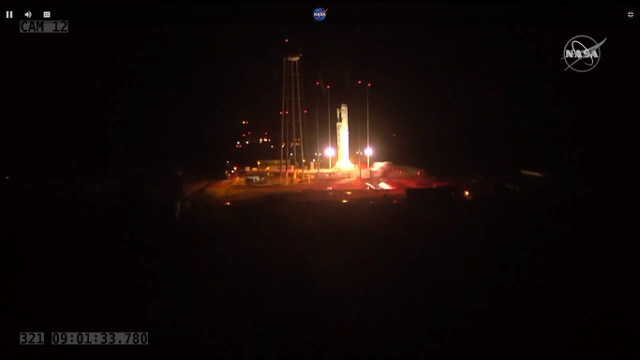
A little while ago Northrop Grumman’s Cygnus spacecraft blasted off atop an Antares rocket from the Mid-Atlantic Regional Spaceport (MARS), part of NASA’s Wallops Flight Facility (WFF) on Wallops Island. After about nine minutes it successfully separated from the rocket’s last stage went en route to its destination. This is its tenth official mission, called NG-10 but also CRS NG-10, to transport supplies to the International Space Station for NASA.
Northrop Grumman Corporation is on its first mission on behalf of NASA after completing the acquisition of Orbital ATK. The announcement of the agreement was given in September 2017 but in the cases of large acquisitions the time is long so the approval of the shareholders arrived on 29 November 2017 but the formalities necessary with the controls by the competent authorities have led to the completion of operations only on 6 June 2018. In the new aerospace giant the former Orbital ATK activities now form the division called Northrop Grumman Innovation Systems and include the Antares carrier rocket and the Cygnus space cargo.
This Cygnus spacecraft was named “John Young” after the astronaut who was part of Gemini, Apollo, and Space Shuttle missions and passed away on January 5, 2018. This Cygnus cargo spacecraft carries a total of 3,416 kg (7,531 lbs.) of cargo, including 1,182 kg (2,606 lbs.) of various types of supplies for the crew, 990 kg (2,182 lbs.) of hardware and the rest in equipment and various components. The cargo includes various CubeSat-class nanosatellites and experiments needed for some of the scientific research carried out on the International Space Station.
The hardware included in the load includes new laptops that will replace the old ones used by the International Space Station crew for a range of activities. There is also Refabricator, a 3D printer that can recycle plastic materials that no longer serve to turn them into new tools useful for the crew. This is a new step forward in the use of this type of technology on the station to allow the crew to make the best use of the available materials and at the same time to produce their own instruments independently.
There are also new water management systems: four tanks already used during the Space Shuttle program and some urine management systems. Urine Processor Assembly (UPA) Distillation Assembly (DA) is the primary component in urine recycling to distil clean drinking water and Fluid Control and Pump Assembly (FCPA), an equipment to manage the flow of urine to the recycling system and then the water to the tanks and the waste to the garbage management systems.
The Cygnus spacecraft is scheduled to reach the International Space Station next Sunday to be captured by the Canadarm2 robotic arm around 10.20 am UTC. Generally, the day after the arrival of a space cargo ship, the crew opens its hatch and begins the unloading operations but in this case the Cygnus will arrive the day after another freighter, the Russian Progress MS-10, so the schedule might change according to priorities.

